Wiccan Holidays – Ostara
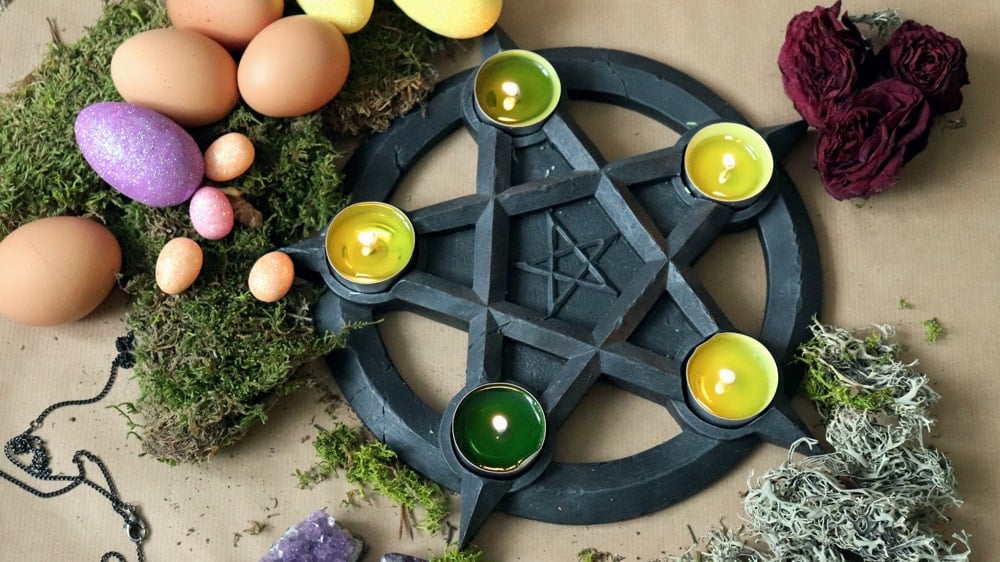
March 27, 2021
Updated: February 28, 2022
Estimated Read Time: 12 Minutes
According to the Wheel of the Year, the eight holidays that are crucial to Wiccan practices correspond to the key points in the Earth’s journey around the Sun. The two solstice festivals are Yule and Litha — resulting in the longest night and/or the longest day of the year, depending on the hemisphere you live in. But today, we’re going to talk about Ostara(pronounced oh-star-uh) — the spring equinox.
During the equinox, whether it be Ostara or Mabon, both of the Earth’s hemispheres get the same amount of daylight. But what’s the spiritual significance of such events? More importantly, how do we incorporate our beliefs into the way we celebrate Ostara? These are some of the questions we’re about to answer.
What is Ostara? A Brief History of the Holiday
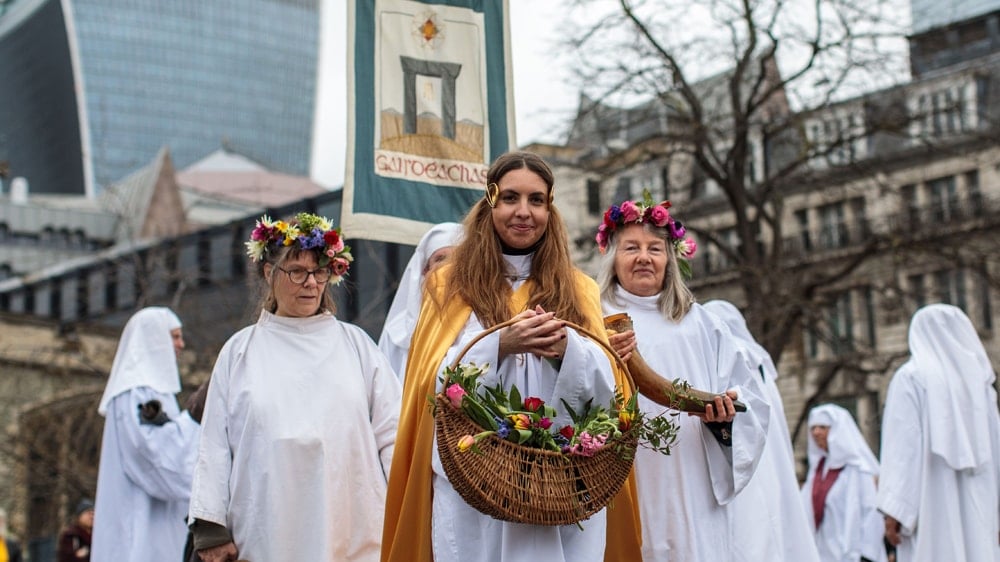
As we have established, Ostara is the festival marking the spring equinox. It’s the first equinox event after the winter solstice. However, since the Wiccan calendar also marks the four cross-quarter solar events of the year, Ostara actually happens between Imbolc and Beltane.
When is Ostara?
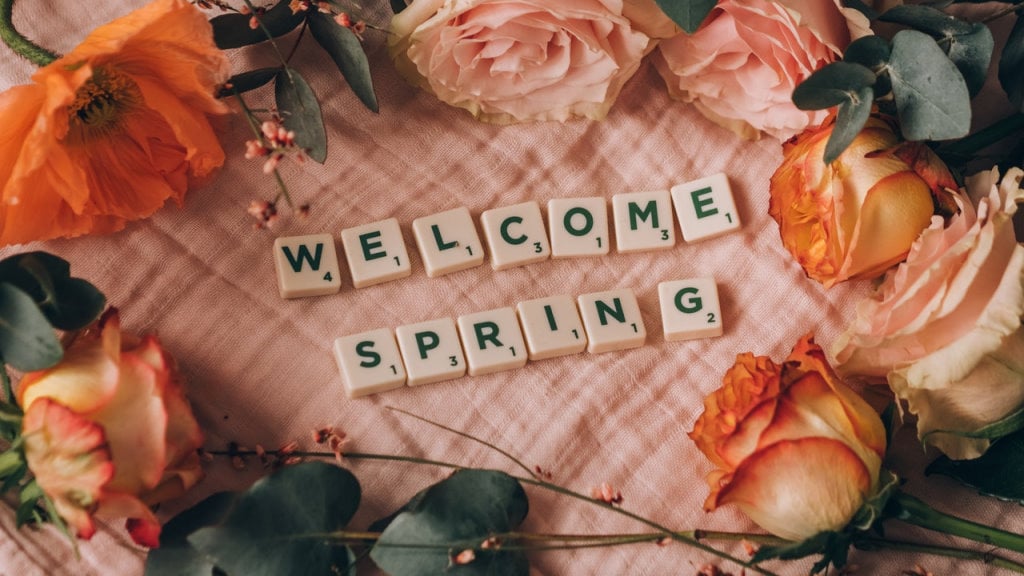
If you’re new to Wiccan festivities, you may be wondering what that means. When is Ostara celebrated, exactly? Well, since the holiday is supposed to mark the beginning of the spring season, we usually celebrate it on March 20th. However, in a broader sense, the festival usually happens between March 19th and 22nd, depending on one’s location.
Wiccan Easter
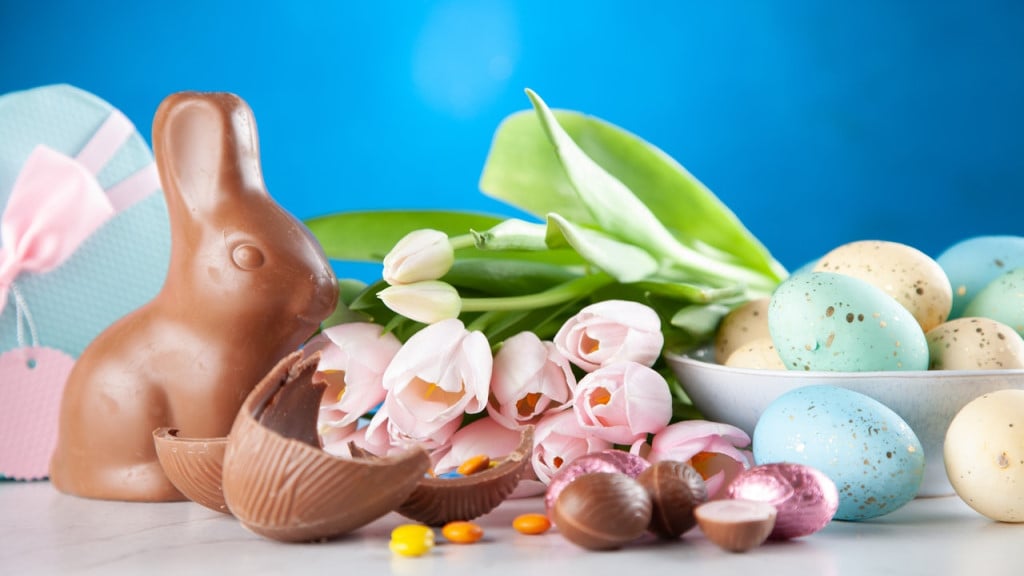
At this point, you might have noticed that between the name of this holiday and its general timeline, it looks quite similar to another spring festival we all know of. That’s right — Easter is the Christian version of Ostara. The two holidays even share some of the same symbols!
And is anyone surprised by these similarities? After all, most Wiccan holidays have a Christian counterpart. Some of our festivals even got absorbed into the mainstream without having a Christian equivalent. The cross-quarter event between Mabon and Yule, Samhain — aka Halloween — is one such holiday.
Presumably, that kind of cross-cultural absorption happened as Christianity spread in areas where pagan beliefs were already established. So with that in mind, let’s talk about the goddess behind Ostara.
Ostara Goddess of Spring
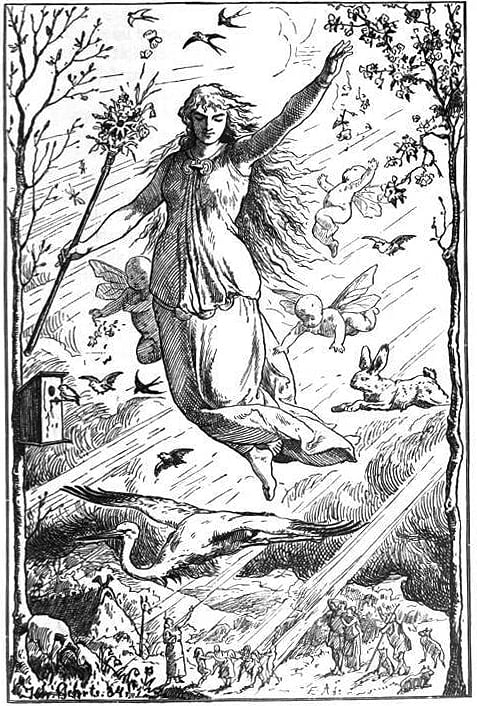
If you grew up celebrating Easter, you might have found yourself wondering about the etymology of the word. Well, we’re here to satisfy your curiosity. Ultimately, “Easter” comes from the germanic word “Eostre”, which is the name of the goddess of spring and dawn.
The earliest mention of the goddess Eostre comes to us from a treatise written in 725. De temporum ratione or the Reckoning of Time describes the calendars of various ancient peoples, including the Anglo-Saxons. As such, it briefly mentions the Anglo-Saxon goddess of spring — Eostre. According to the monk who wrote the treatise, the whole month of April — aptly referred to as Eostremonath — was devoted to the worship of that deity.
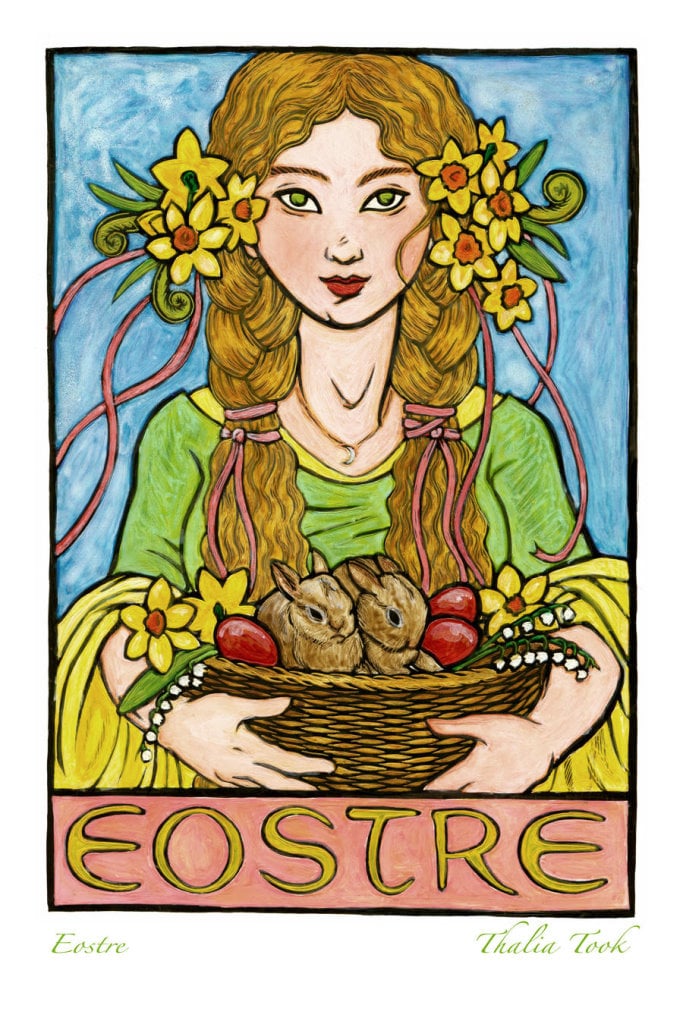
Other than that, we don’t have much information about the original goddess. Jacob Grimm, one of the Grimm Brothers, described her as a deity that brings light, joy, and blessings. Jacob Grimm also explained some of Ostara rituals the pagans might have performed. For example, they would have lit bonfires on the day. Young women would have been wearing white on the day to celebrate the maiden goddess. Of course, it’s hard to say how much of the original beliefs were around by the time the Grimm Brothers were alive.
But seeing as how Ostara’s name became Easter, we shouldn’t be too surprised that some of the original symbolism of the holiday was preserved. But we’ll get to that later. For now, let’s talk about the contemporary meaning of Ostara.
Our free Wicca 101 course provides the essential knowledge and skills
you need to start confidently practicing Wicca.
Join the Wicca Academy community today!
The Triple Goddess and Other Spring Deities
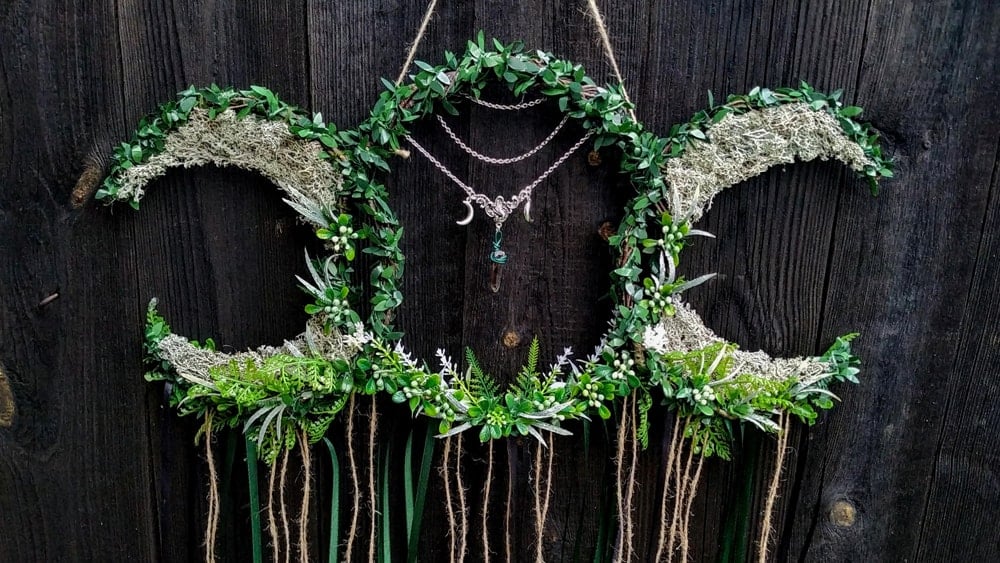
In contemporary Wiccan beliefs, we don’t necessarily worship the goddess in the same way these Anglo-Saxons did. For one, every practitioner may choose the patron deity they identify with the most. After all, many different cultures have female deities of the spring season that are also celebrated around the same time.
So if you identify with the story of Persephone, you can choose her as your patron goddess. The Greek goddess Eos (or Aurora, as the Romans called her) also has some similarities to Eostre — and we’re not just talking about their respective names. Like Eostre, Eos was the goddess of dawn.
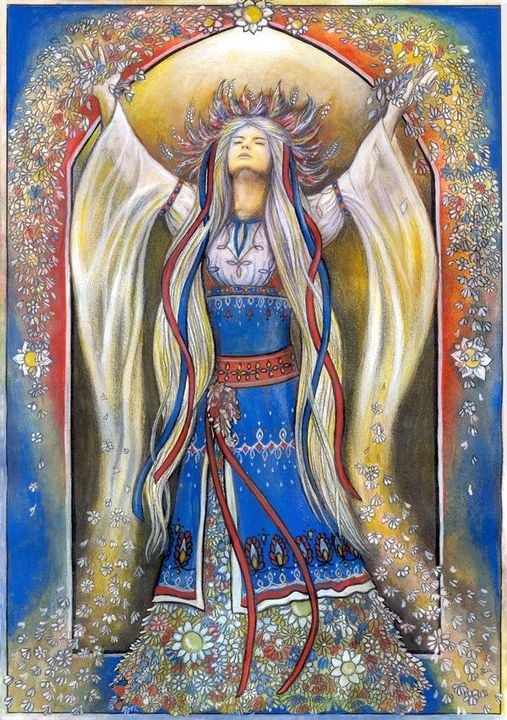
On the other hand, if we’re looking for springtime deities specifically, there are other pantheons to consider. For example, in Slavic paganism, the goddess of spring is usually known as Lada, Vesna, or Kostroma. According to some stories, that deity is a reincarnation (of sorts) of the winter goddess Marzanna or Morana. That cyclical nature of a female deity is something we see in modern Wiccan beliefs too.
After all, the goddess most Wiccans celebrate during Ostara isn’t the Eostre of yore. Instead, we honor the Triple Goddess, who makes her way through the different stages of her life as each of the Wiccan festivals rolls around.
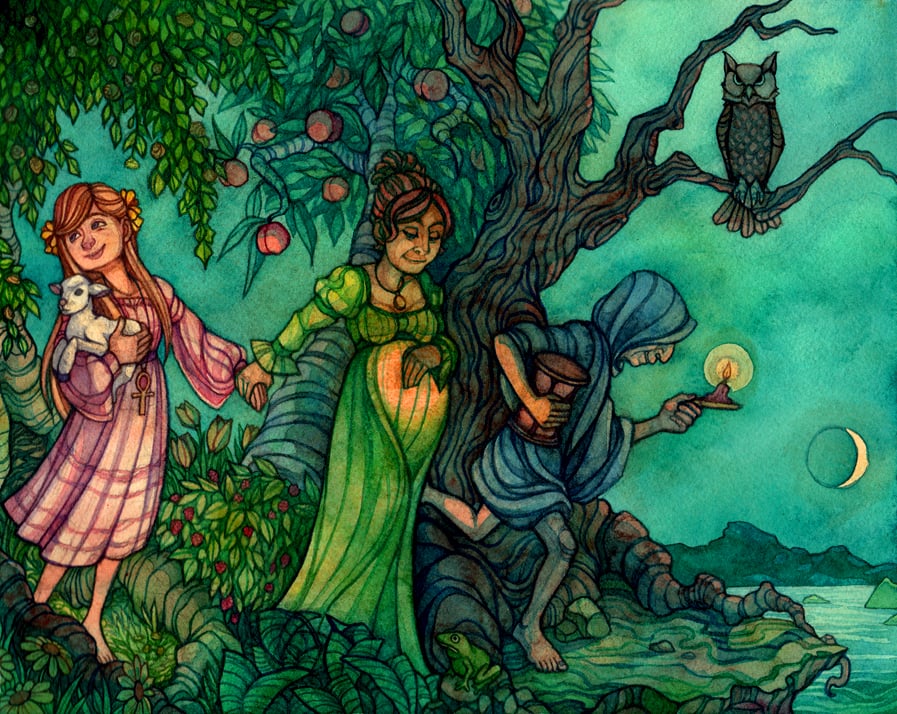
During Ostara, the Wiccan goddess is at the height of her power in her maiden form. Because of that, the symbolism surrounding this holiday is all about fertility and new beginnings. Additionally, since the equinox is a day when we get the same amount of daylight and nighttime, this festival restores balance. Having said all that, let’s talk about how we can represent those concepts in physical forms and rituals.
Traditional Ostara Symbols and Decorations
The Heralds of Spring
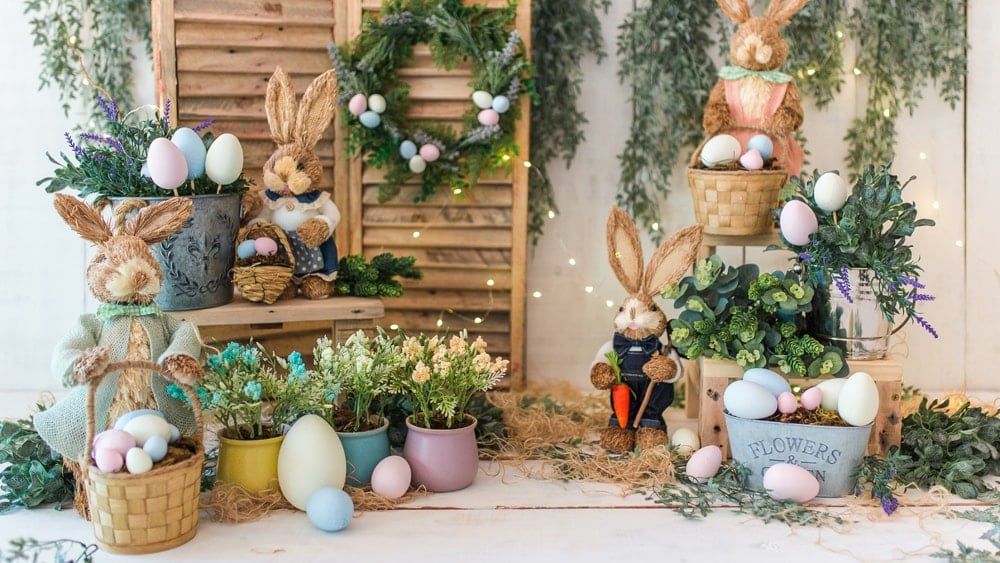
Before we can organize an Ostara celebration, we have to familiarize ourselves with the main symbols of the festival. Unsurprisingly, many of them overlap with mainstream Easter imagery.
Rabbits
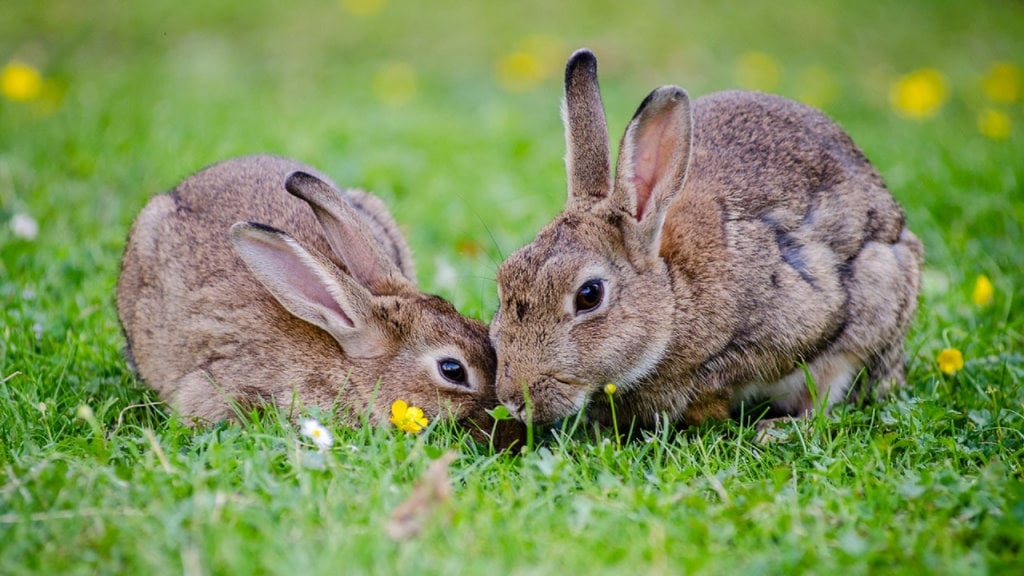
Since Ostara is a festival of fertility and the rebirth of nature, it’s only natural to have the hare represented. So if you were wondering how bunnies became the symbol of Easter — there’s your answer. Obviously, the fertile nature of the animal makes it a perfect symbol of the festival of birth. However, there’s another aspect that ties it to springtime.
Namely, the spring season is the hare’s natural breeding season. During this time, it’s not uncommon to see jacks hurtling after jills in the countryside, reaching speeds of 40 or 50 miles per hour. Seeing such a display of speed and agility every springtime must have impressed our ancestors enough to incorporate into their festivities.
As a nocturnal animal, the hare is also associated with the moon and the deities that control it. Certain cultures even believed that both the moon and the hare are reborn every day — as such, both represent eternal life and abundance.
Eggs
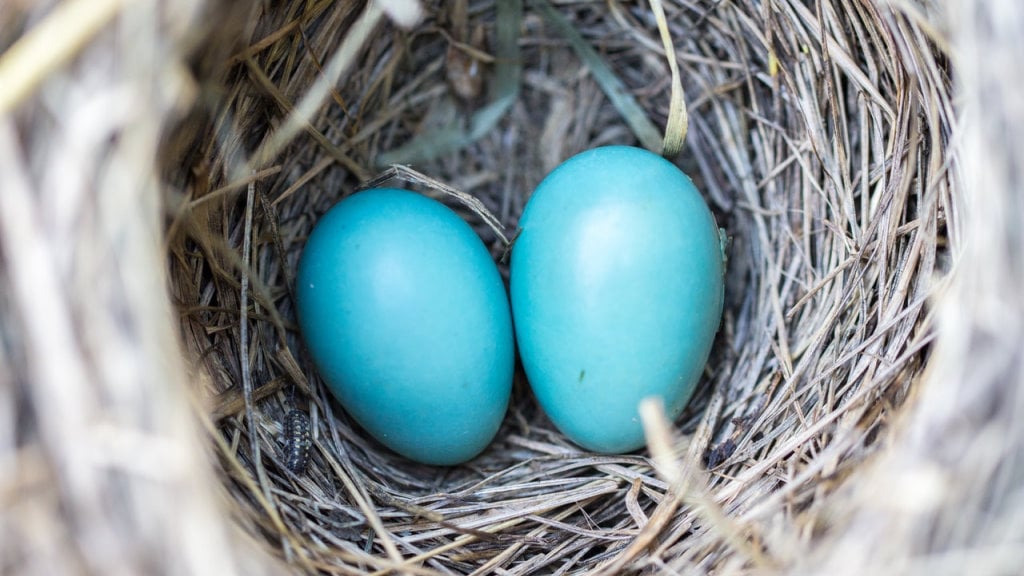
As for the eggs and florals, it’s not difficult to understand why those elements were added into the mix. In a way, these represent a continuation of the theme of rebirth and fertility. Eggs also represent balance, since the yolk and egg whites can represent the dichotomy between the light and dark, or female and male energy.
However, these basic symbols aren’t the only things we associate with Ostara.
Other Ostara Symbols
Like any other Wiccan holiday, Ostara is associated with certain plants, colors, foods, and drinks. So before we start setting up our altars, let’s establish the main items we’ll be working with.
Flowers and Herbs
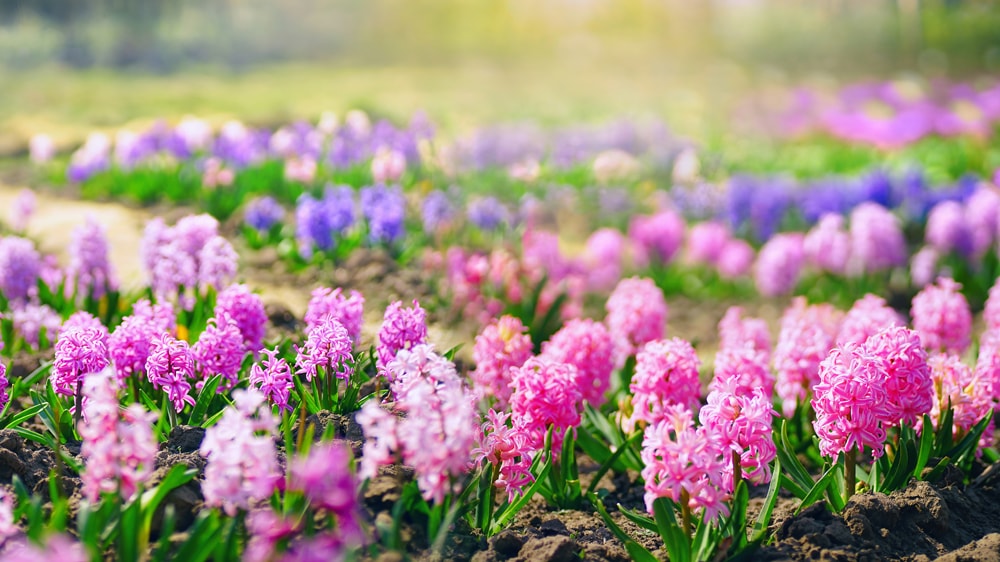
Since flowers are the most obvious heralds of the season, we’ll start there. Lavender, daffodils, and lemongrass are all safe choices. Then again, you can use pretty much any fresh spring flowers for your Ostara rituals. But if you’re looking for cleansing incense, we recommend using dried jasmine, rose, sage, rosemary, magnolia, or even strawberry.
Colors
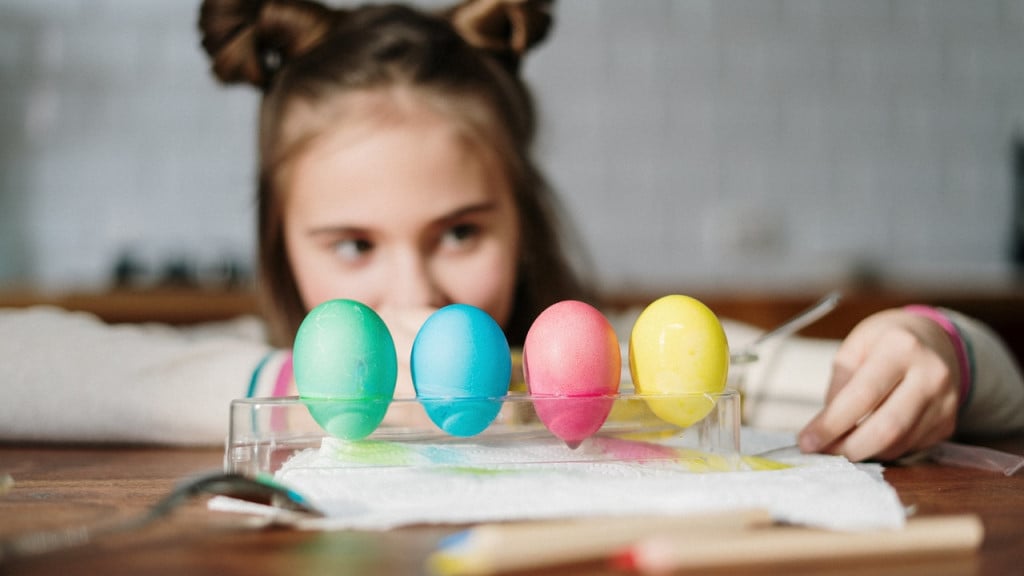
Now, as we already know, the color palette of the festival is desaturated but lively. It mainly features shades of green, yellow, and blue, as well as other pastel hues. Those colors are also reflected in the gemstones or crystals you should use for casting during this time.
Crystals
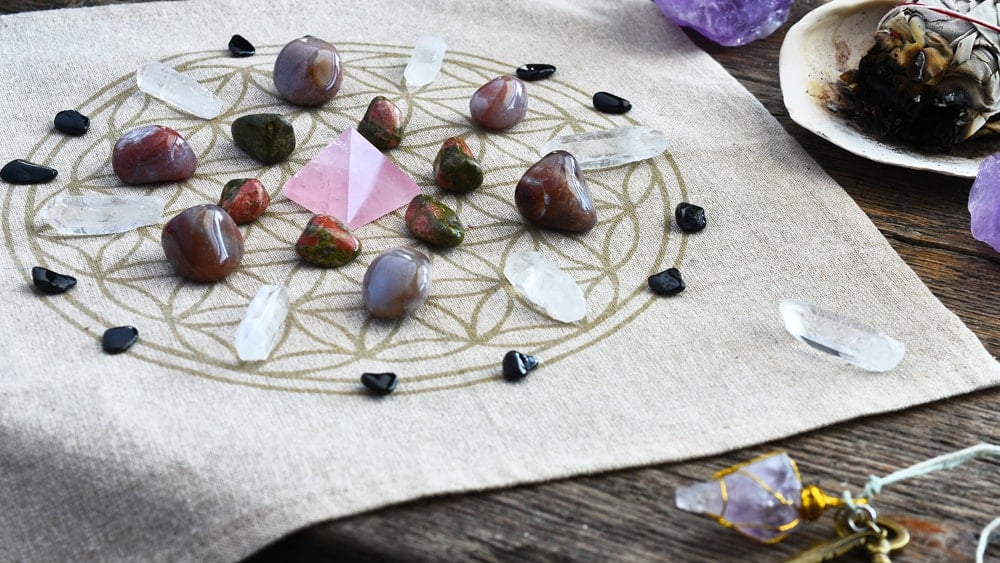
Clear and rose quartz, amethyst, and moonstone are excellent options. However, you can also use red carnelian and jasper to promote courage, health, and strength in the new season. Of course, all that energy will have to come from somewhere. So what kind of food can you expect to see at an Ostara celebration?
Foods and Recipes
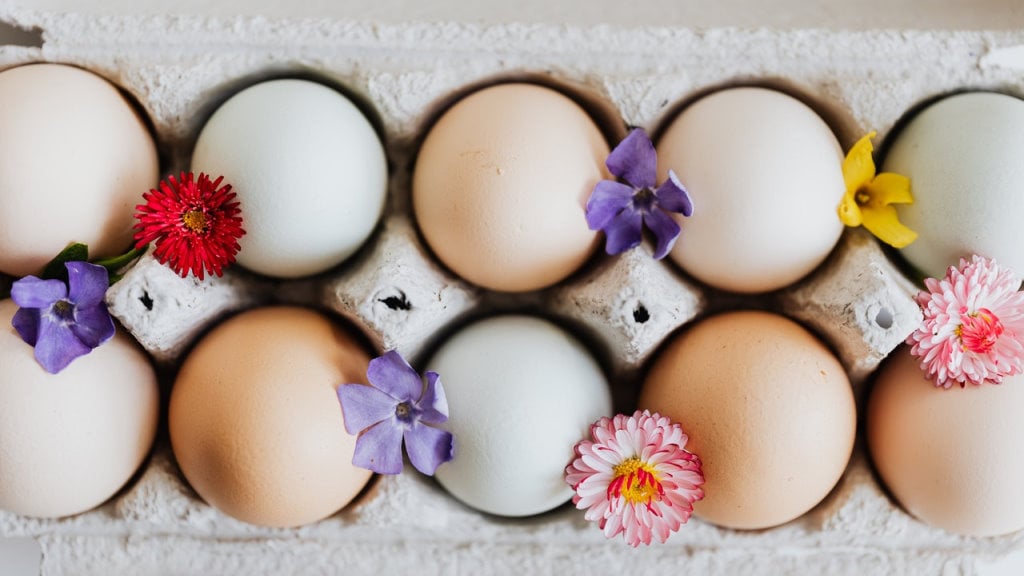
Naturally, the main course you’ll find in most Wiccan households revolves around eggs. You can boil them and paint them or just crack them directly over a pan. If you’re going to be painting your Ostara eggs (whether they’re boiled or wooden ones), you should be aware of the meaning of different colors.
Additionally, bread and baked goods, in general, are pretty popular. Also, you can sprinkle various seeds and honey over pretty much anything to give it a dash of springtime.
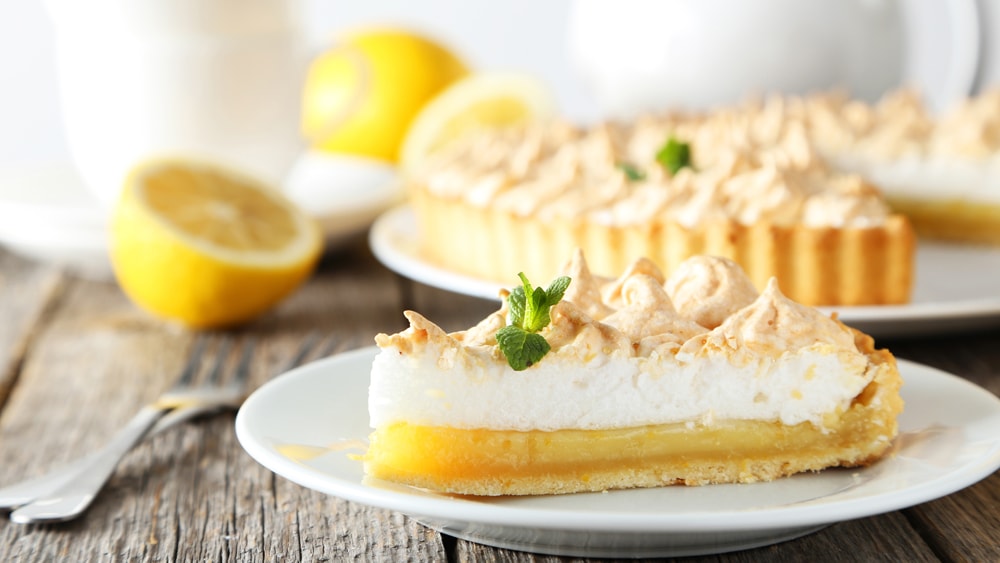
The Ostara recipes you’ll find online are full of wonderful pastries. Since citrus fruits are in season around late March, many of them have lemon among their ingredients. But lemon bread isn’t the only treat you can have during your Ostara feast!
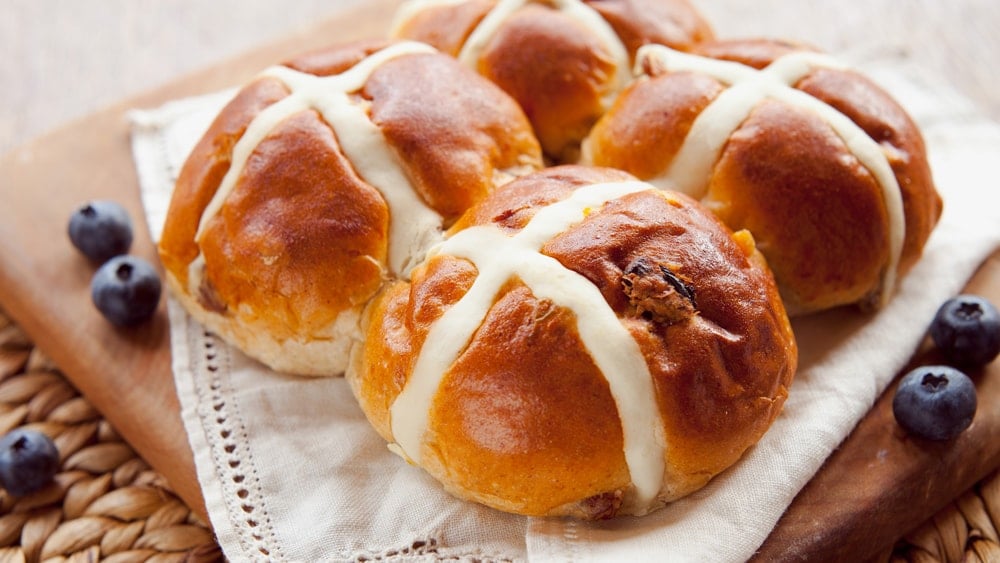
Despite their seemingly Christian symbolism, hot cross buns have a long history in Wiccan households. Some evidence indicates that the recipe is pre-Christian, having existed in Ancient Greece as well. For us, the cross represents the four elements, seasons, or phases of the moon. It can even point to the four main seasonal sabbats. But no matter what meaning you usually ascribe to any of the elements we’ve talked about, just remember to dedicate them to the Goddess on her special day, and you’ll be good to go.
As for the drinks, the most popular beverages include milk and wine. However, you can also drink hyssop, linden, and other herbal teas. Now that you have the broad strokes of the holiday, let’s get into the specifics of Ostara traditions.
Don’t miss out!
We have a special offer for you after you create your free account
How to Celebrate Ostara Solo or With Your Coven
As with any other Wiccan ritual, Ostara is a holiday we can celebrate solo or with a coven. On top of that, we’ve already established that different people can mark the occasion on different days. After all, the spring and autumn equinoxes switch days depending on which hemisphere you live in. Still, no matter where you live or who you get to celebrate with, here are some of the activities that will help you welcome the new season.
Open the Windows or Perform Your Ostara Rituals Outside

Ostara is all about restoration and breathing new life into your life and surroundings. So the first thing you can do to get in the festive mood is simple — just open all the windows. Optionally perform a spiritual cleanse or spiritual bath for even more restoration!
The brisk air is sure to cleanse your home of residual negative energies from the past season. On top of that, you could also use your floral incense to cleanse the area as well as the objects you’ll be placing on your altar.
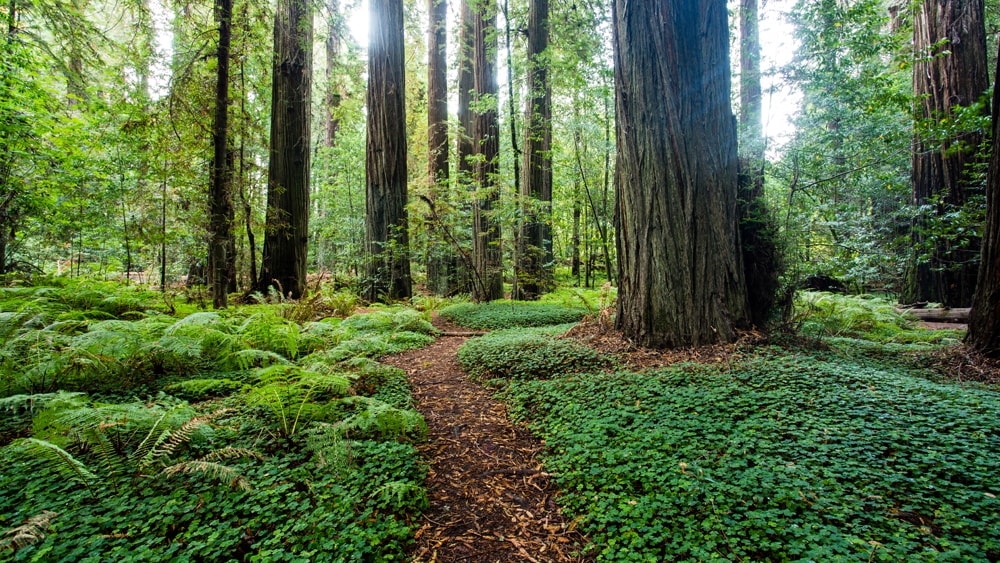
Speaking of your altar, another way to get into the spirit of the sabbat is to go outside to gather the items you need. When we’re taking things from nature, it’s important to show our gratitude or leave a token behind. Doing so will appease the spirits — or Fae — that protect nature.
In any case, for your altar, you can pick up fallen nuts, pretty rocks, fruits, as well as local blooms. But if you’re cutting something from a plant, make sure you do so carefully. Before you go home, set out sweets for the Fae or scatter eggshells to fertilize the soil, perhaps after planting some seeds. In fact, those activities are just as meaningful if you do them with a group — so ask your coven to tag along.
Set Up Your Ostara Altar
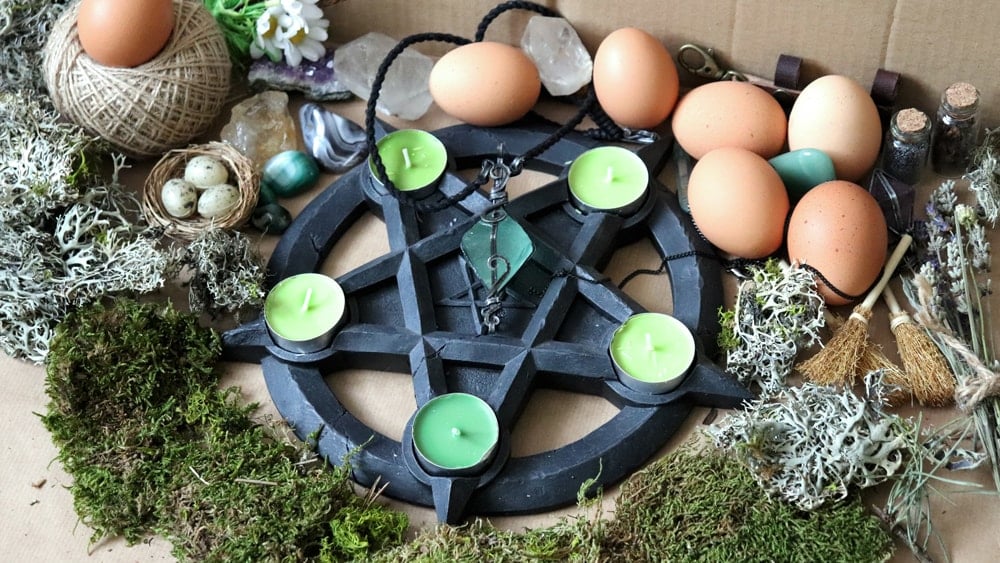
Once you have found items to decorate your altar with, it’s time to arrange it. To begin with, you’ll want to cleanse everything you’ll be using with incense or cast a fresh protective spell over your home. After you complete that, you can start arranging your items at your altar.
Now, an altar is as personal to a Wiccan as their wand. Still, we can all draw inspiration from each other’s altars. So let’s talk about different ways to arrange your own.
Since greenery is a big part of Ostara, you can start by laying down moss as a base. These plants are great because they don’t generally lose their hue for weeks or months at a time. So you could enjoy your green altar until Beltane (around May 1st). Of course, if you want to contain the mess, you can keep the moss on a single tray or in a basket — or skip it altogether.
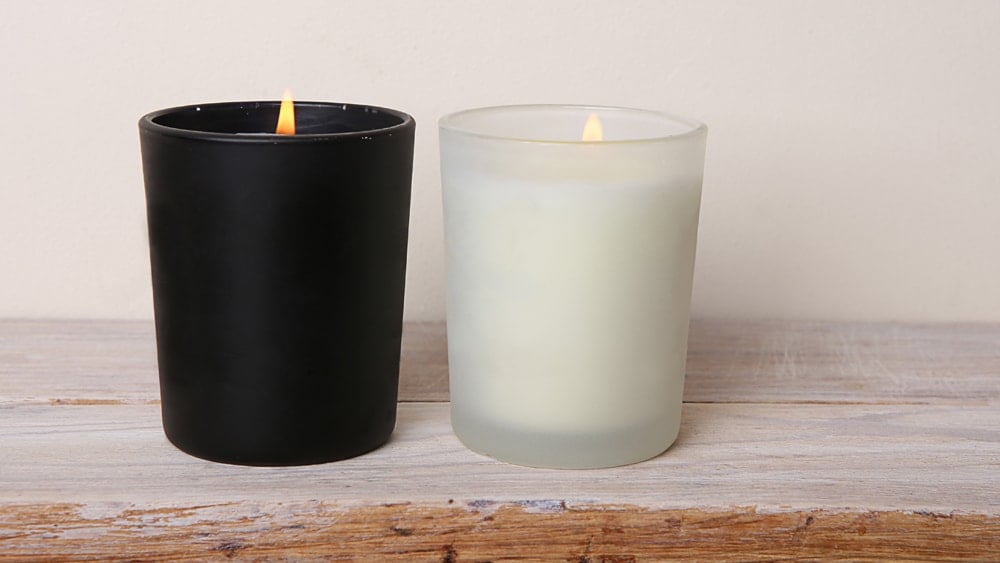
Next up, you’ll want to add fresh flowers, as well as the candles and crystals of your choosing. Black and white (or just white) candles are an excellent choice for an Ostara altar because they represent the balance between dark and light — or just the coming of the light. As for the flowers, you can leave them in vases, lay them horizontally, or even scatter their petals across the altar.
If you want, you can also add a small nest with some eggs. Before you add those to your altar, you can boil them and paint them. You can even use small quail eggs or fake ones if you’re vegan. Alternatively, you can leave some eggshells at the altar and leave it at that.
Cast an Ostara Blessing
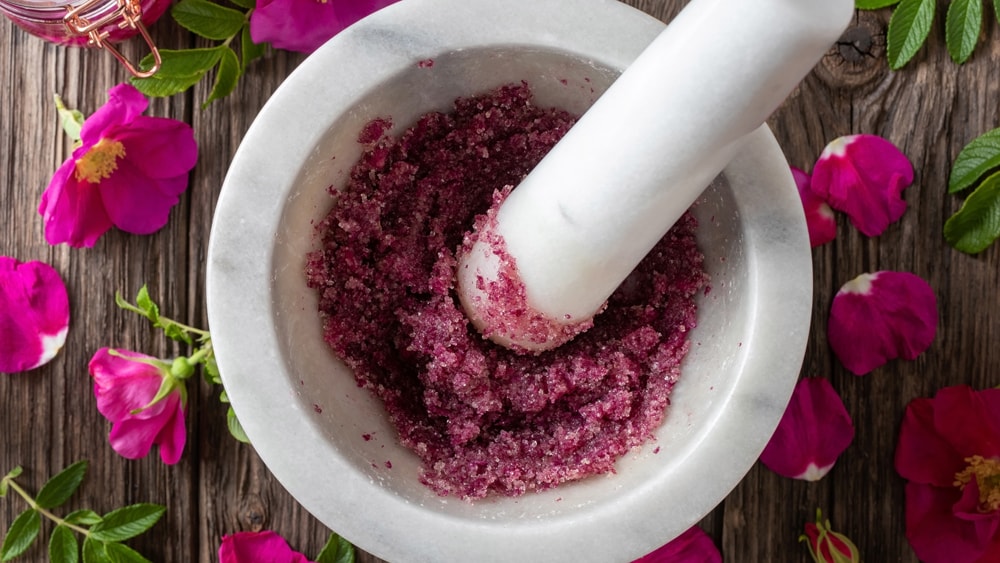
When you finish setting up your altar, you can spruce it up with different kinds of spells. After all, Ostara is the perfect time for casting courage, motivation, and abundance blessings. With that in mind, let’s talk about one way we can go about doing that.
- First, prepare a bowl of rain or moon water and place an agate egg inside it while you prepare your herbs and flowers.
- Then, put dried lavender, rose petals, rose leaves, and parsley into your mortar and crush them well. These ingredients should bring you peace, love, growth, protection, and good fortune in the new season. Crushing them activates not only their aromas but also awakens the potent magick of the ingredients.
- After adding the mixture to the bowl of water add a lemon peel into the mix for happiness.
- When you have it all in the water, rub the stone egg to awaken its magick and speak your intentions.
- Save a bit of that water in a smaller vessel and place the bowl with the rest of the infused water at your altar.
Do Your Ostara Tarot Reading
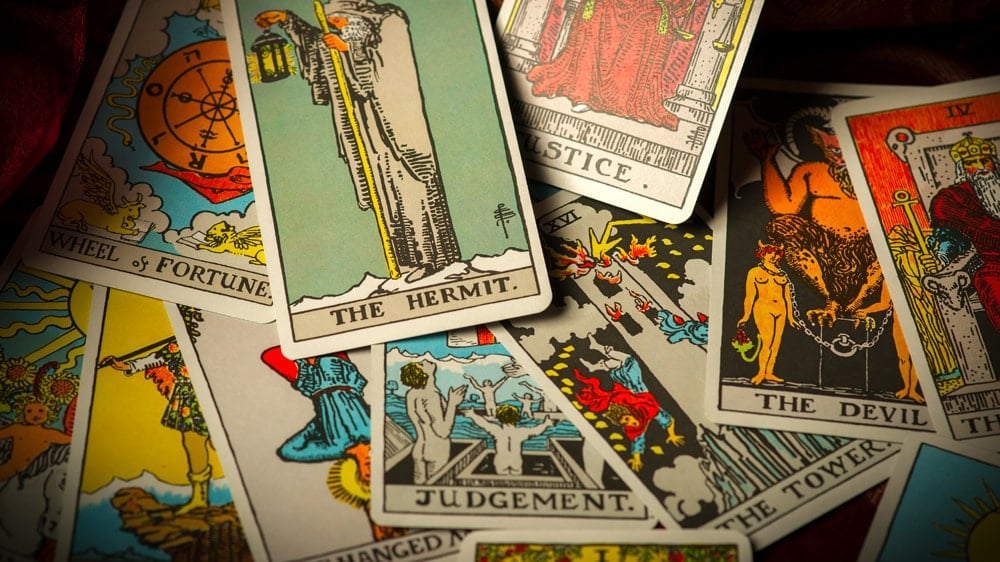
Many Wiccans like to mark the beginning of a new season with a tarot reading. But even if you’re not adept at fortune-telling, you can still use these cards to summon blessings.
For example, you could select a tarot card that represents the things you’re hoping to accomplish and place it at your altar. The meaning behind the Empress card corresponds most closely with the symbolism of the holiday. However, if you don’t want to summon new beginnings, you can opt for a more abstract card. The Star card carries with it hope, faith, and inspiration, so it’s the ideal way to let go of the darkness and step into the light.
Have an Ostara Feast
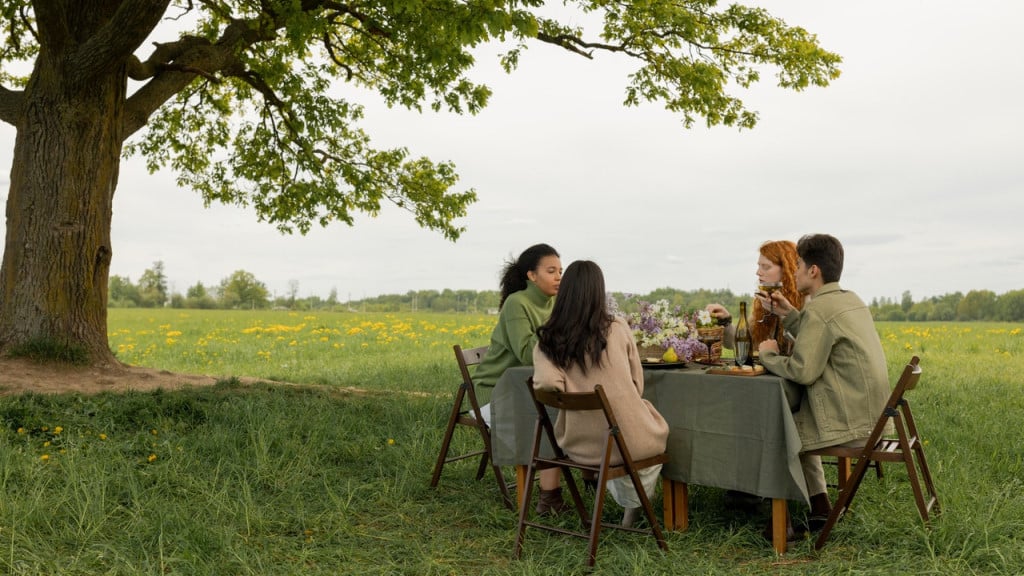
The best way to properly celebrate the season of rebirth and fertility is, of course, with an abundance of food. We’ve already mentioned some classic Ostara foods above. Make some for yourself, or join with others and celebrate the bounty of the season!
Revel In the Potential of the New Season!
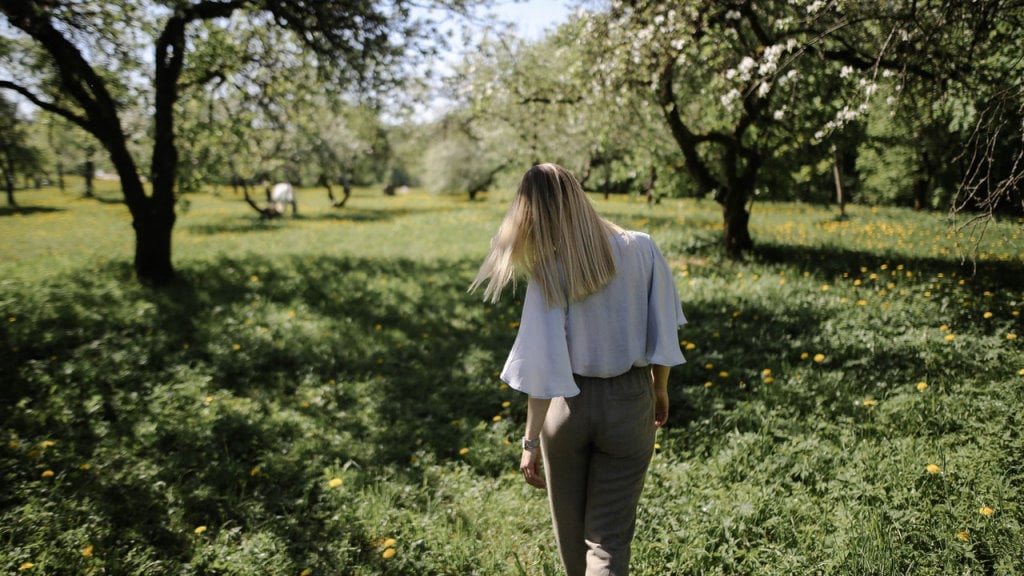
Symbolically, the spring equinox — or Ostara — represents both the female and male deities stepping into their prime. However, it’s so much more than that. Above all, it’s a time to reflect on our goals and set new intentions for the coming year. So no matter what Ostara ritual you choose to mark the sabbat, just remember to keep it true to yourself.
Check out our other articles:
Jar Spells Made Simple
Get to Know Your Familiar
Kitchen Magick for Beginners
Sigils for Newcomers
See All Articles
Love this article? Share the magick with your friends and loved ones!